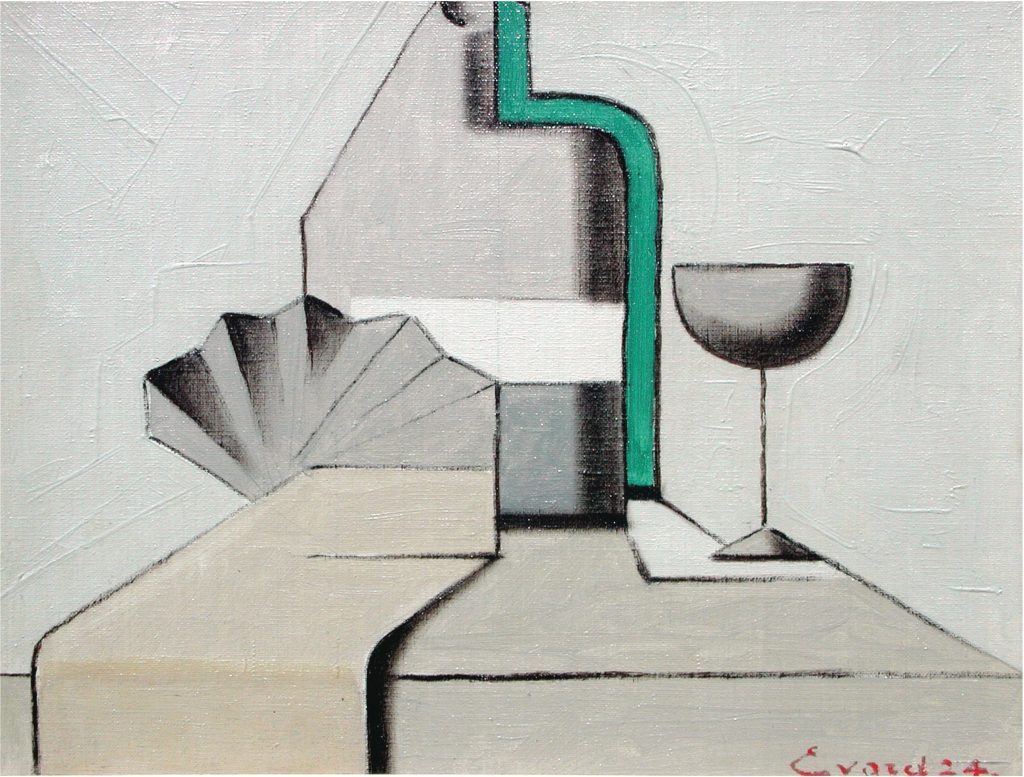

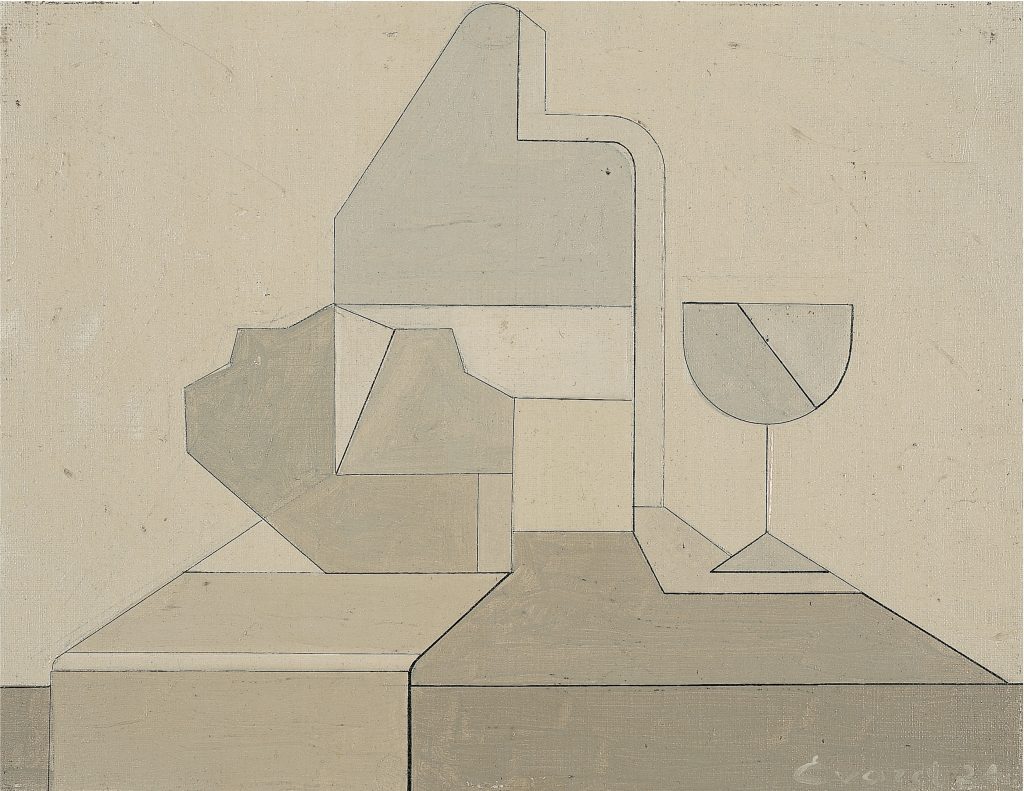
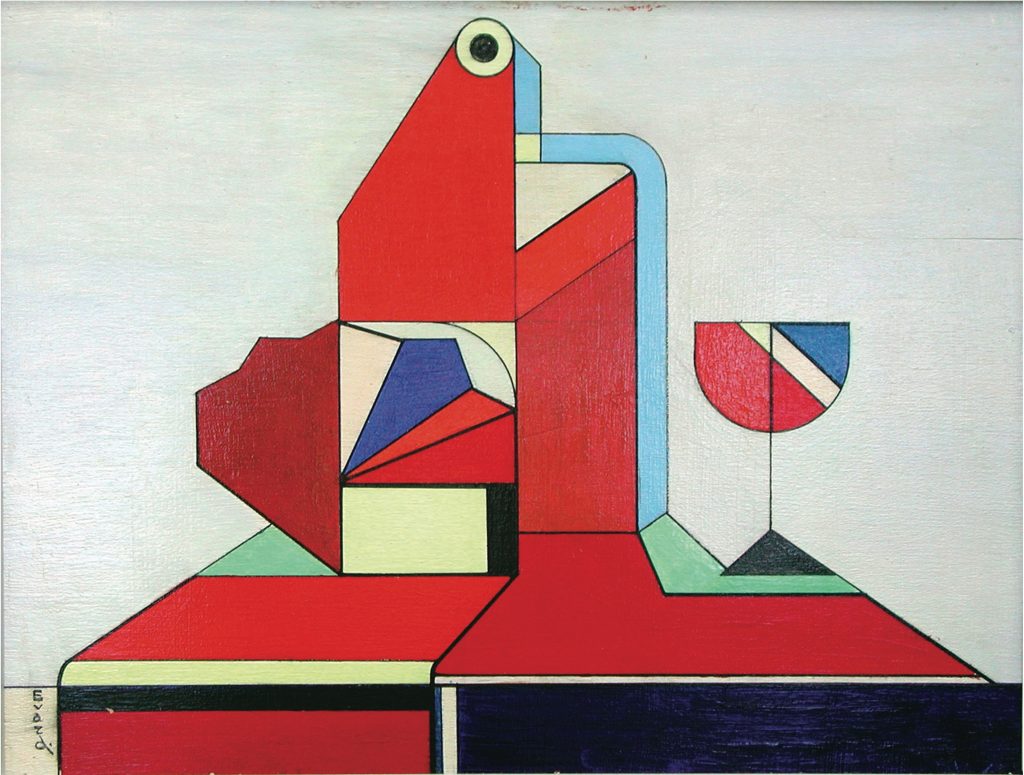
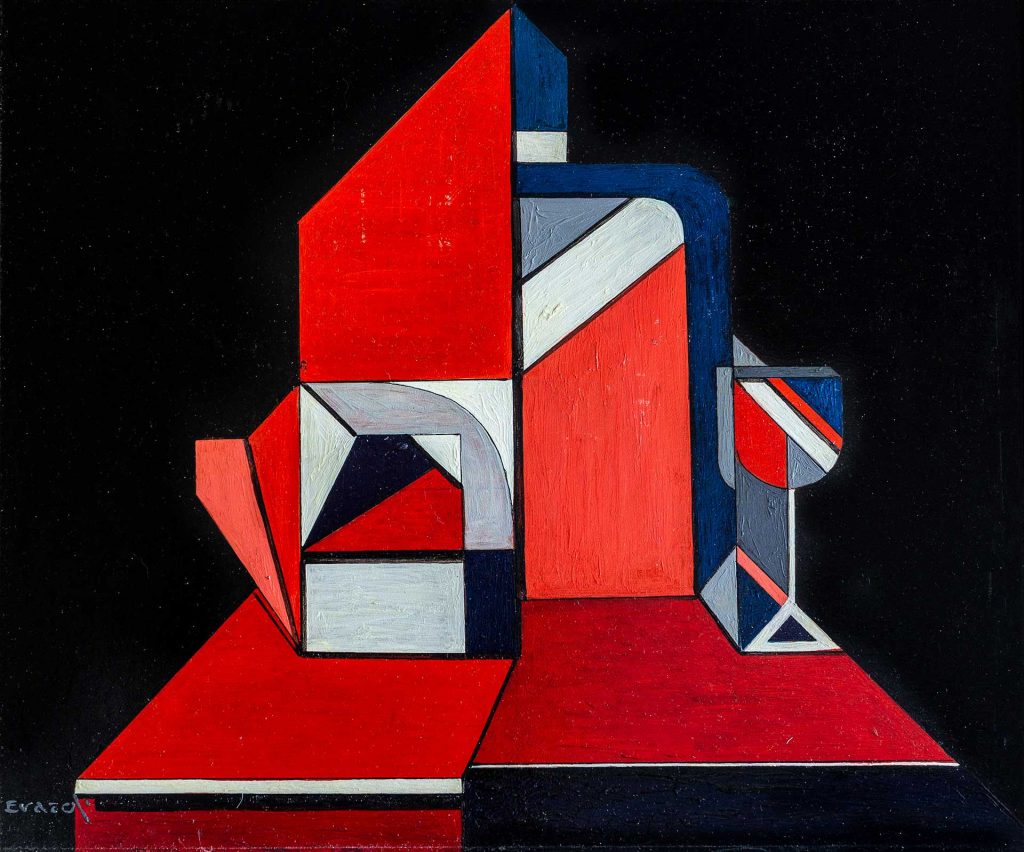
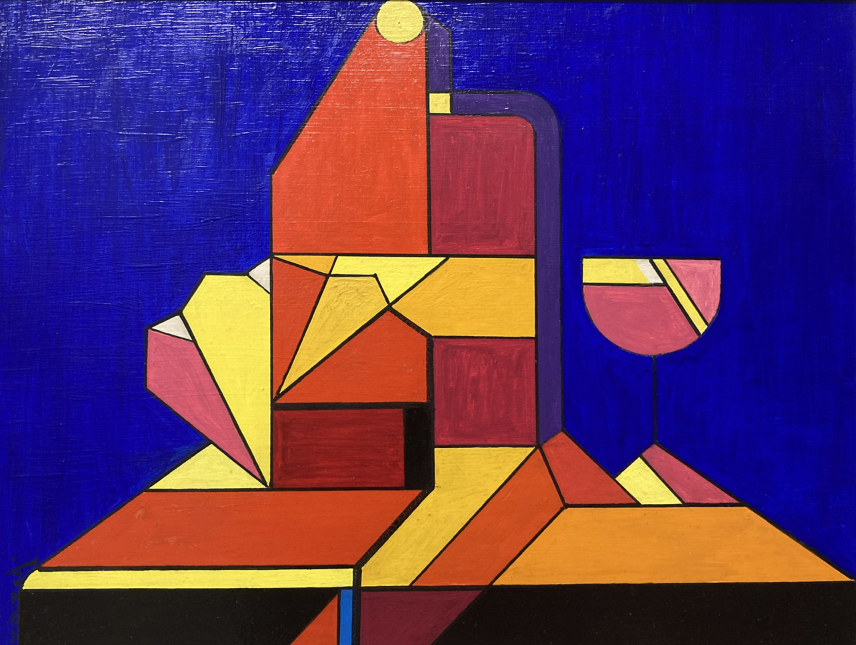
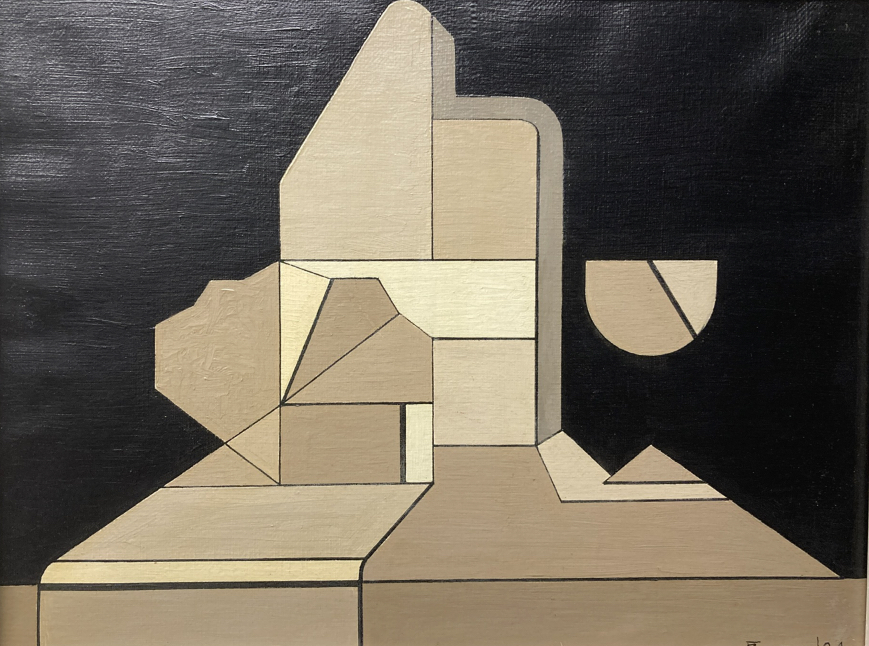
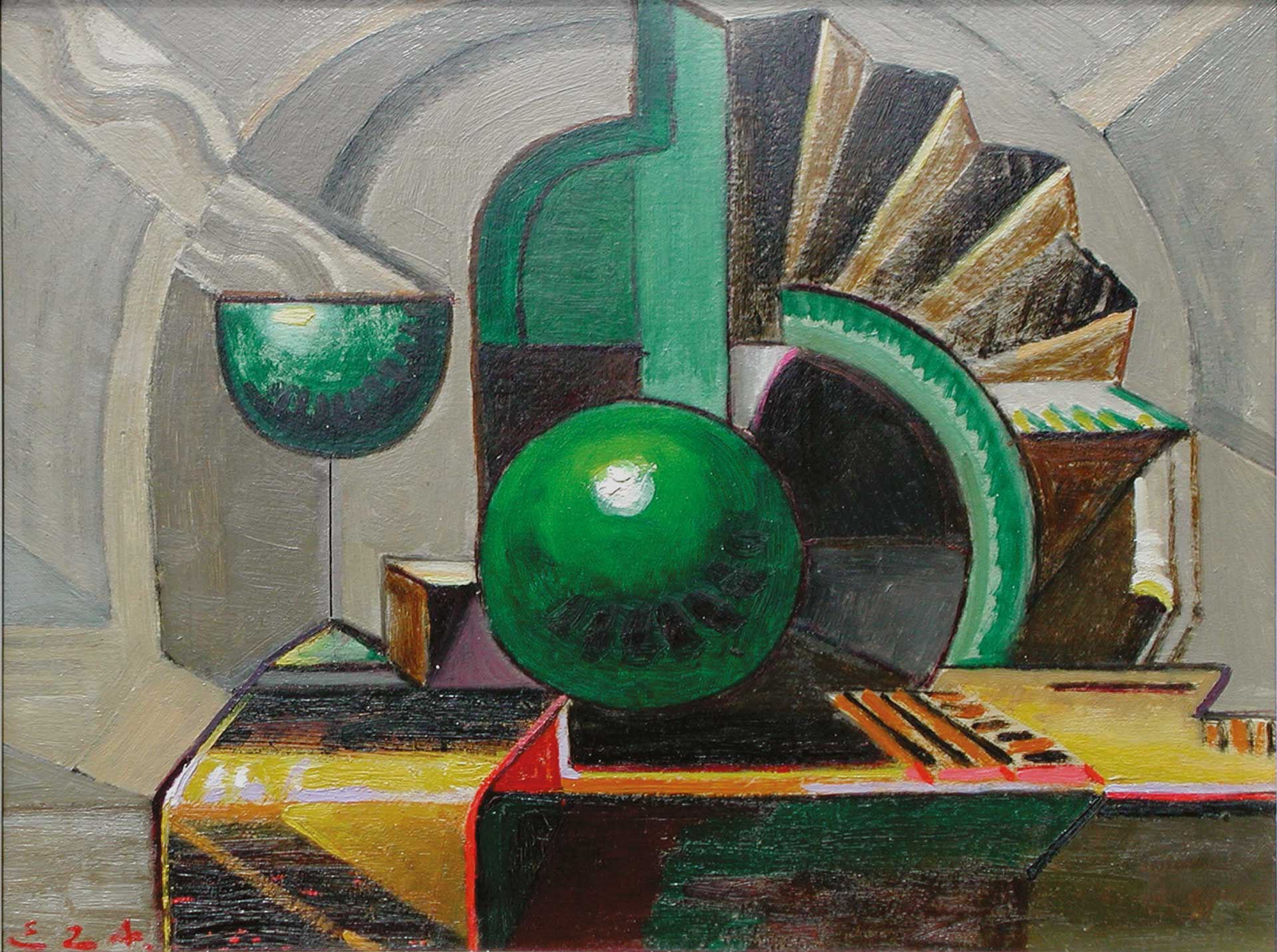

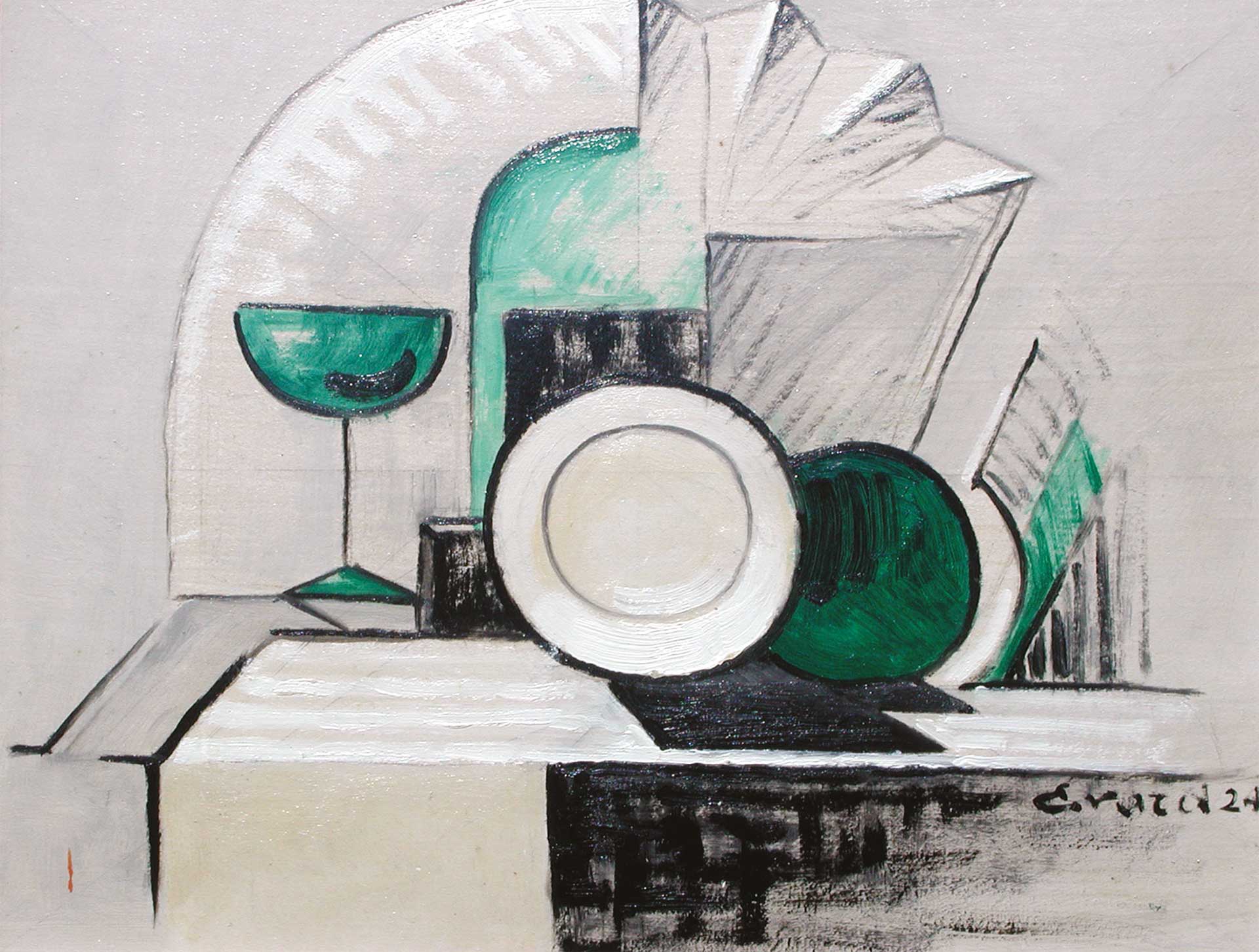
The Symphonia Series represents the most extensive series in Evard’s oeuvre. The artist himself was deeply connected to these paintings. He owned this series of works throughout his life and marked them on the back with “Propriété Privée”. Indeed, this motif accompanied the artist for decades: the first version dates back to 1924, and he painted the last one in 1960! Thus, one can trace his artistic development through this series. Furthermore, it offers a unique insight into his working method.
At the starting point of this series is a still life consisting of a table, glass, bottle, and napkin. In the first version from 1924, the artist still uses shadows, the objects are partly depicted volumetrically, and occasionally an impression of spatial depth is created. This first version is strongly influenced by Cubism. Although the depiction is still figurative, we have already moved far from a realistic painting style; more and more, the era of forms now begins, as is already evident in the geometrically arranged background. In a sketch, the artist breaks down the motif into geometric forms; a process of increasing simplification now follows. We also find a work rendered entirely in beige tones. The pictorial objects remain recognizable by their contours, but Evard now divides them into colorful fields, separated by black contour lines. To this resulting construct of forms, he can now freely assign new colors, revealing his preference for sharp contrasts and vibrant colors. Thus, works are created that repeat the same motif but unfold different effects through varying color schemes.
